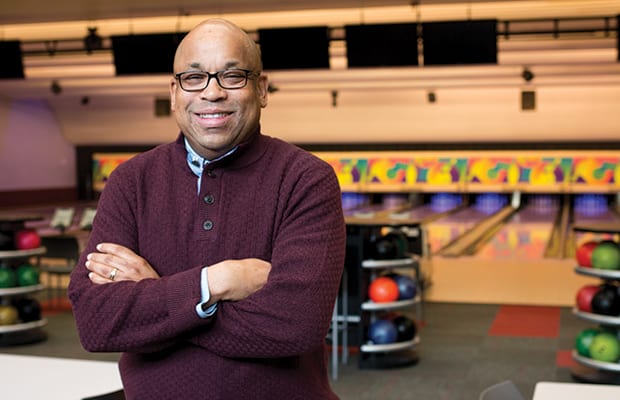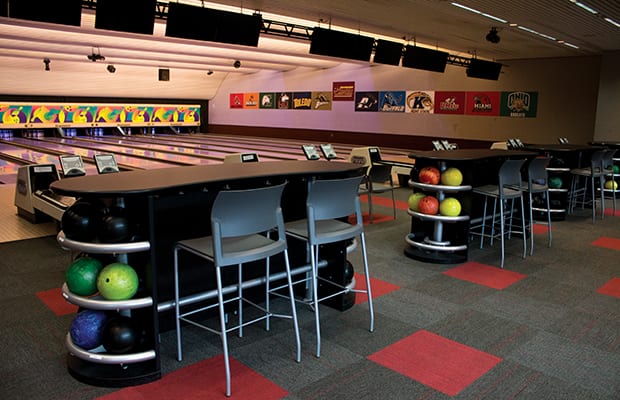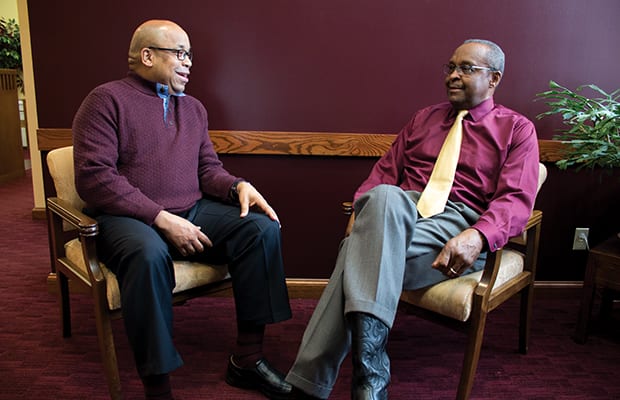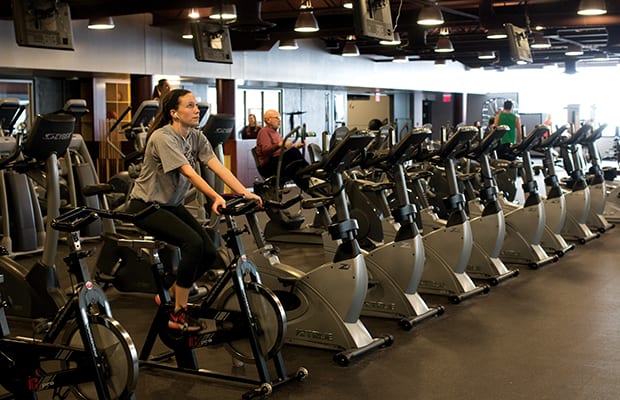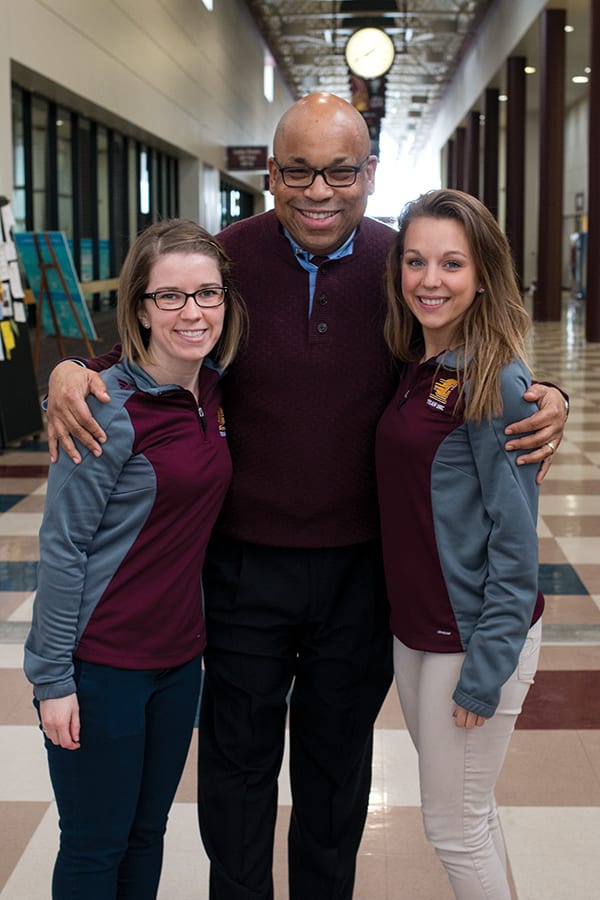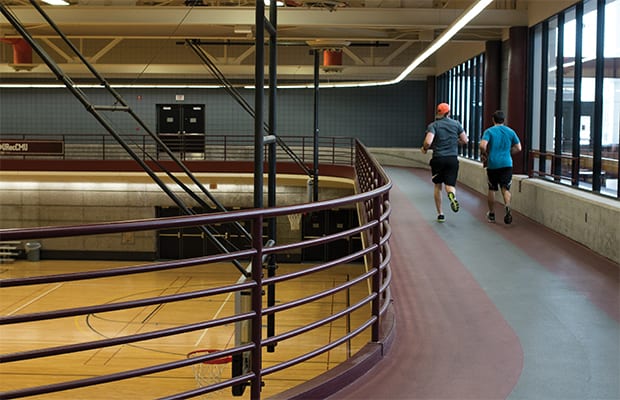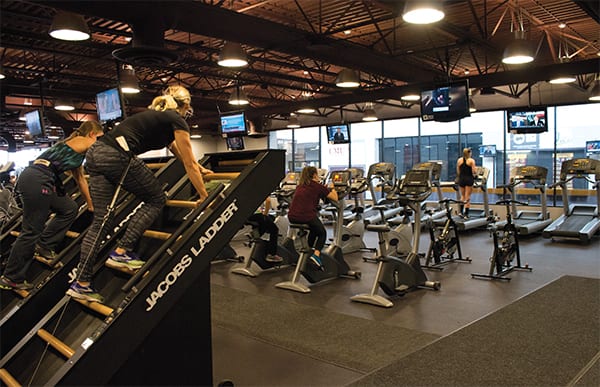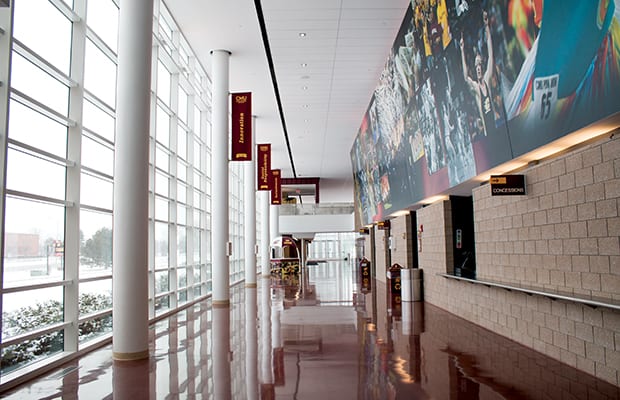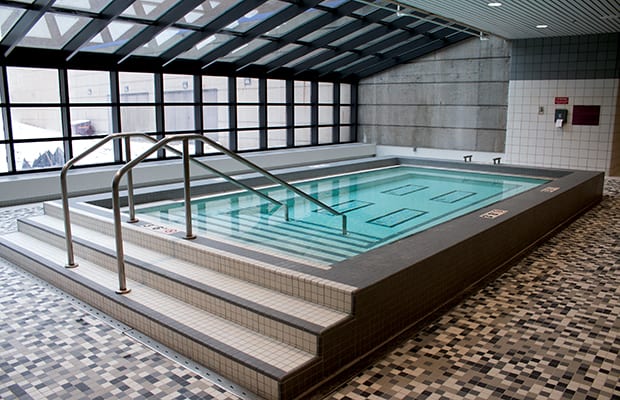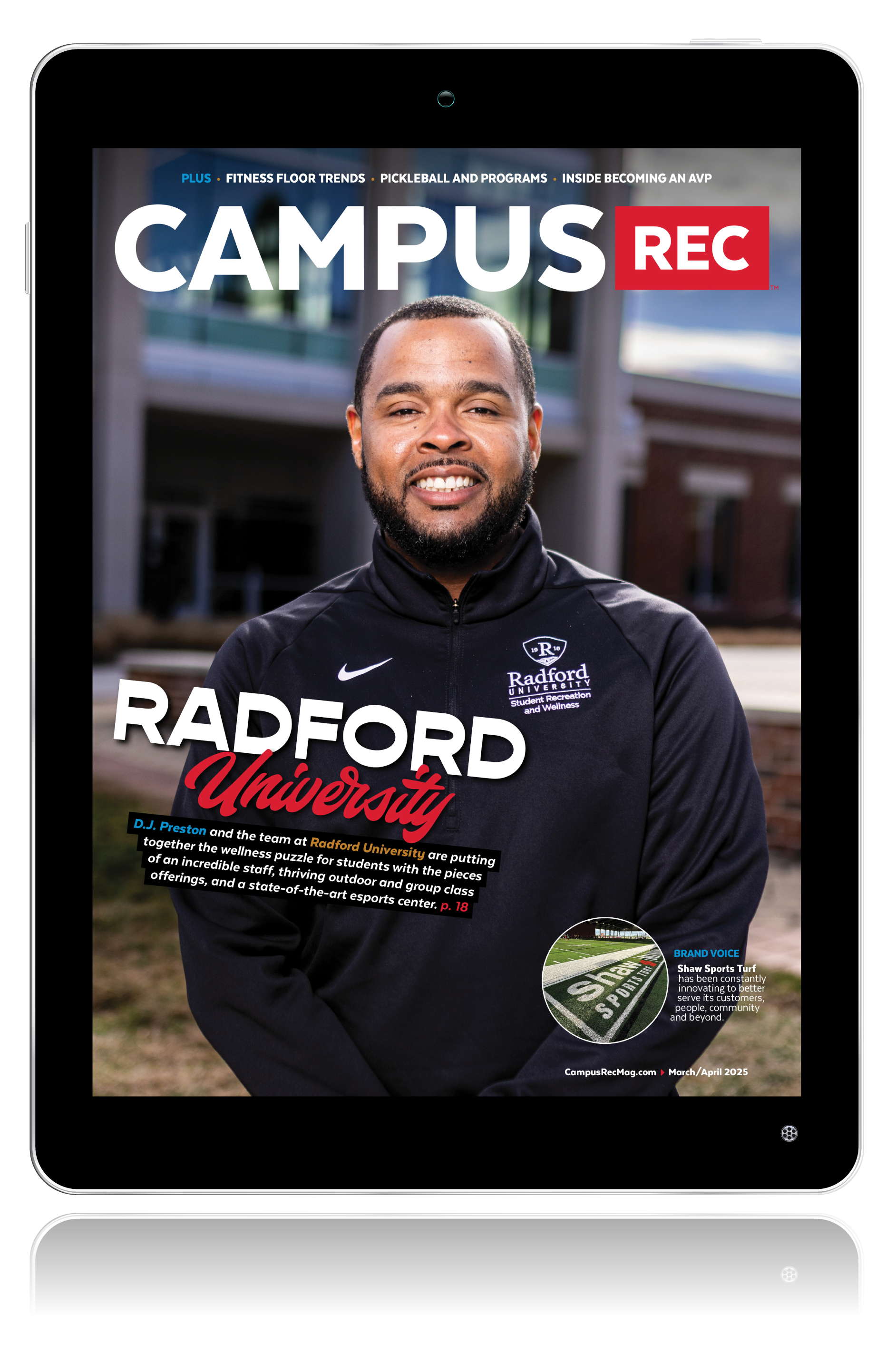The S.S. BLT at Max & Emily’s in Mt. Pleasant, Michigan, is not your typical sandwich — a toasted Ciabatta bun topped with grilled salmon, applewood smoked bacon, lettuce, tomato and finished with chipotle mayo. The sandwich, providing a unique blend of flavors, is named after Stan Shingles, the Assistant Vice President of University Recreation at Central Michigan University (CMU). It is not every day that someone has a sandwich named after them at the local eatery, but if you spend time getting to know Shingles, you would expect nothing less.
With the nickname Mayor Shingles on campus, he has garnered the respect of not only the university community, but also the industry as a whole, serving as the President of NIRSA in 2015. This reverence is due to the fact that over the past 27 years, Shingles has worked to make University Recreation a focal point on campus, providing students with not only a positive outlet to engage in health and fitness, but opportunities for leadership development and other co-curricular advancement.
As Dr. George E. Ross, the president of CMU, emphasized: University Recreation is core to the university’s mission. “As faculty and staff we need to live up to two main responsibilities that we have to our students — that is knowledge and character,” said Ross. “You are going to learn a lot of things in the classroom, in the laboratory, in the library and in study groups, but that character comes from these co-curricular activities built around leadership, participation and frankly, competition. I think University Recreation is an integral part of that.”
At CMU, University Recreation is not viewed as an option or a sidebar conversation; instead it plays an essential role in the development and success of students on campus. As a result, investments are consistently being made and discussions being had on ways to improve facilities, programming, staffing and leadership development, and engagement opportunities.
When it comes to supporting University Recreation on campus, Steven Johnson, the Vice President of Enrollment and Student Services, explained it is essential to give the department a platform. “It has to be integrated appropriately into the university’s organizational culture,” said Johnson. “It is not ‘if you want it, it is here’ or a secondary decision. It needs to really be a pinnacle part of every conversation around student development and student success. Which is why we have made the type of investments we have made and discuss it more through our larger student life master planning. We know the value added, but we would not know it if it was treated as an auxiliary, sitting off to the side.”
This is precisely how Shingles got his nickname as the Mayor. He works with numerous departments and leaders on campus, ensuring University Recreation is a priority for all. “Stan sits at the table with every other senior officer, academic dean, president and vice president in order to articulate not only what is working, but to tell us what is happening on the horizon, the things we need to be sensitive of and the things we need to anticipate — the student expectations around health and wellness,” added Johnson.
Traditionally, campus recreation has been centered around physical wellness and competition, focusing mostly on competitive outlets like intramural sports. But over the years, the industry has evolved, incorporating group fitness, nutrition, personal training and various other options in order to provide a more holistic approach to wellness.
As these changes have occurred, Shingles has worked to develop the narrative of University Recreation on campus, shifting the focus to its impact on student success. As Shingles explained, national statistics have shown that when students are engaged in co-curricular activities on campus such as intramural sports, club sports or other recreational activities, they persist at a much higher rate.
“It is all about strategically positioning recreation as co-curricular,” said Shingles. “It is not extra. It is not an add on, but it supports curricular and that helps to elevate the narrative. Our mission is to inspire and engage, because if we are talking about student success, it starts with those students being engaged in recreation, leadership, residence life, etc. Their success measures are much greater than those who sit in their room and say there is nothing to do.”
With their renewed effort around student success, two years ago University Recreation made the move from the Financial Services division to the Enrollment and Student Services division. According to Shingles, this change has been a welcome challenge. Instead of having a singular focus on balancing budgets and other financial elements, there has been a cultural shift within the department where supporting student success is now the top priority.
“The investment is not always financial, it is how the organization is being positioned,” explained Shingles. “Enrollment and Student Services is very different than what we were experiencing two years ago because everything previously was very transactional. You had a facility, so you had to know the value proposition and make sure you were balancing your budget. We are still taking care of the financial side, but at the core now, we are focusing on student success. It is less about the transactional part of the job and more about developing competencies of student staff that enhance their employability when they leave here.”
Over the past two years, University Recreation has clearly shifted its focus from the transaction to the transformation. Its mission is to provide customized opportunities and experiential learning while fostering lifelong health and wellbeing. As Shingles explained, they work to achieve this mission by providing outstanding facilities and inclusive and innovative programming that encourages engagement of the entire campus.
A perfect example of this is the Student Activity Center. While the facility was built almost 25 years ago, investments and improvements have consistently been made to keep the facility up-to-date. The facility serves not only the needs of those looking to maintain a healthy lifestyle through exercise, but it is the hub of all campus activity. In fact, it is one of the few recreation facilities in the nation to have a bowling center on site that students, faculty, staff and community members can use during open hours and rent for events.
Whether students choose to play on an intramural sports team, take a group fitness class or go bowling, the development, character building, socialization and overall experience that occurs as a result of participation is what remains most important to Shingles and the rest of the CMU leadership team. “I think for the University our commitment to student success would be the great accomplishment,” said Shingles. “We continue to try and move forward rather than stand still or move backwards and that is a huge commitment, especially in today’s culture of shrinking state funding and rising tuition and fees. Having to justify the ‘why’ of our relevance on college campus, I think we do a great job of that professionally with our research and our professional development to help individuals understand how they connect to student success.”
So why is University Recreation the perfect outlet for student development? Why does it affect student success, persistence rates and even enrollment? As Johnson explained, University Recreation is such a unique platform because students seek it out on their own. It is on their terms. “We generally know what a classroom experience is going to provide. We know what team exercises are going to provide,” added Johnson. “But when you put yourself in that type of environment where it is self motivated, it enriches their own experience about value and worth.”



